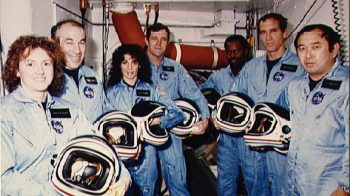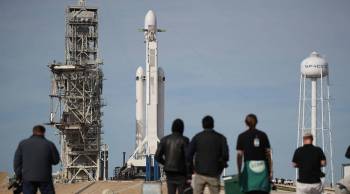TEXT OF INTERVIEW
Kai Ryssdal: The space shuttle landed this afternoon in Florida right on time at 12:32 Eastern. NASA gets its name in the paper when the shuttle flies. But most of the work to get it launched and landed is done by private contractors. A firm called United Space Alliance has a two billion dollar agreement with the government to do just that. Not to mention the shuttle itself built by thousands of contractors.
But not everything that goes into space does so with the full faith and credit of the U.S. government behind it. Private individuals — rich ones — spent millions of their own dollars building spaceships.
In 2004, a space plane funded by Microsoft billionaire Paul Allen made it into orbit. Author Michael Belfiore says that ship, called SpaceShipOne, was a landmark for private space entrepreneurs.
Michael Belfiore: What SpaceShipOne demonstrated was that you didn’t need billions of dollars to get to space. So that ship only cost $25 million, which is well within the range of a lot of private investors. So now we’ve got people like Robert Bigelow building the first commercial space station for under $500 million. It’s still a lot of money for one person, but that’s only about as much as it costs for one space-shuttle launch.
Ryssdal: Yeah, but unless you’re book does really, really well, you’re not gonna be able to afford to do it. I mean, it’s $18 [million], $20 million a pop, right?
Belfiore: Yeah, well, that was before SpaceShipOne. The price will drop as economies of scale go on, and then we’ll have things beyond space tourism — like point-to-point travel on Earth, from California to, say, Australia, wherever you want, around the world. You’re gonna be able to go there for maybe an hour, hour and a half, two hours tops. And that’s gonna be a really big business at some point.
Ryssdal: But you know, our infrastructure right now can barely handle me getting on a plane from Los Angeles to New York and arriving on time with all my bags in tact. I mean, how are we gonna do it when we’re going suborbital or orbital flights from wherever to wherever?
Belfiore: Well, it’s like any transportation system, it’ll have to have the infrastructure in place. That’s what the entrepreneurs are trying to do right now. I can’t speak to the airlines, my bags get lost, too. But I think we’re gonna see a lot of improvements.
Ryssdal: There is an element of this that one feels obliged to bring up. You know, even after 30, 40 years in the space business for NASA, it’s still not routine. People die doing this. What happens the first time a private spaceship kills somebody?
Belfiore: Well, that’s a question everyone’s asking. We saw a partial answer to that question just a couple of weeks ago out in Mojave. The folks building SpaceShipTwo, they did suffer an accident. There seems to have been some problem with the flow of nitrous oxide, resulted in an explosion. We don’t know all the answers yet, the investigation’s still going on, but three people on their team were killed, three more put in the hospital. And that really did give the industry pause, you know.
But the short answer is they’re really working hard for this not to happen. There’s gonna be test flights after test flights after test flights. But, yes, we will have to see what happens in the future.
Ryssdal: You know eventually, it’s not going to be just rich people throwing money at this thing. Safety, obviously, is one thing investors are going to look at. How will these organizations convince would-be investors that it’s a going concern?
Belfiore: Remember, the early aviation pioneers, they started out flying joy riders from county fairs and things like that for five bucks a shot. So first, it was just something that rich people, crazy people did. Then once Charles Lindbergh flew across the Atlantic Ocean, well that proved “Hey, we can do this affordably and safely.”
And that’s more or less the point we’re at right now. SpaceShipOne was the Charles Lindbergh, Brian Binney and Mike Melville, they were the Charles Lindberghs of our time. And we’re gonna see a lot more people taking this a lot more seriously.
Ryssdal: The book by Michael Belfiore is called “Rocketeers.” Michael, thanks a lot for your time.
Belfiore: Thank you.
There’s a lot happening in the world. Through it all, Marketplace is here for you.
You rely on Marketplace to break down the world’s events and tell you how it affects you in a fact-based, approachable way. We rely on your financial support to keep making that possible.
Your donation today powers the independent journalism that you rely on. For just $5/month, you can help sustain Marketplace so we can keep reporting on the things that matter to you.


















